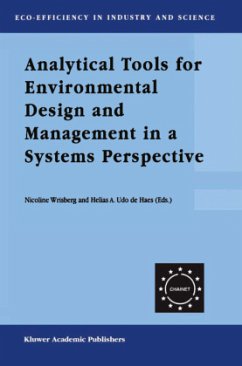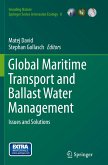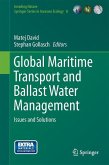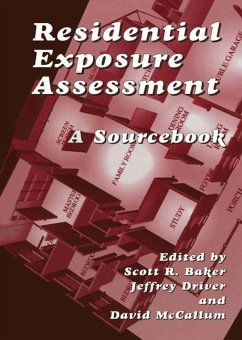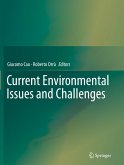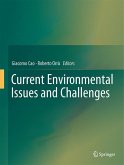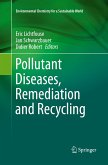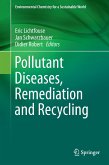Analytical Tools for Environmental Design and Management in a Systems Perspective
The Combined Use of Analytical Tools
Herausgegeben:Wrisberg, Nicoline; Udo de Haes, Helias A.; Triebswetter, Ursula; Eder, Peter; Clift, R.
Analytical Tools for Environmental Design and Management in a Systems Perspective
The Combined Use of Analytical Tools
Herausgegeben:Wrisberg, Nicoline; Udo de Haes, Helias A.; Triebswetter, Ursula; Eder, Peter; Clift, R.
- Broschiertes Buch
- Merkliste
- Auf die Merkliste
- Bewerten Bewerten
- Teilen
- Produkt teilen
- Produkterinnerung
- Produkterinnerung
The aim of this book is to link demand and supply of environmental information in the field of Life Cycle Management. The book is based on the results of the CHAINET concerted action financed by EU-DGXII for the work period 1998-2000, and is intended to build bridges between the different scientific communities in the field of Life Cycle Management. A structured approach is followed, meaning that both demand and supply of environmental information are characterised, after which the two are linked.
Andere Kunden interessierten sich auch für
![Global Maritime Transport and Ballast Water Management Global Maritime Transport and Ballast Water Management]() Global Maritime Transport and Ballast Water Management75,99 €
Global Maritime Transport and Ballast Water Management75,99 €![Global Maritime Transport and Ballast Water Management Global Maritime Transport and Ballast Water Management]() Global Maritime Transport and Ballast Water Management75,99 €
Global Maritime Transport and Ballast Water Management75,99 €![Residential Exposure Assessment Residential Exposure Assessment]() Residential Exposure Assessment75,99 €
Residential Exposure Assessment75,99 €![Current Environmental Issues and Challenges Current Environmental Issues and Challenges]() Current Environmental Issues and Challenges38,99 €
Current Environmental Issues and Challenges38,99 €![Current Environmental Issues and Challenges Current Environmental Issues and Challenges]() Current Environmental Issues and Challenges38,99 €
Current Environmental Issues and Challenges38,99 €![Pollutant Diseases, Remediation and Recycling Pollutant Diseases, Remediation and Recycling]() Pollutant Diseases, Remediation and Recycling112,99 €
Pollutant Diseases, Remediation and Recycling112,99 €![Pollutant Diseases, Remediation and Recycling Pollutant Diseases, Remediation and Recycling]() Pollutant Diseases, Remediation and Recycling113,99 €
Pollutant Diseases, Remediation and Recycling113,99 €-
-
-
The aim of this book is to link demand and supply of environmental information in the field of Life Cycle Management. The book is based on the results of the CHAINET concerted action financed by EU-DGXII for the work period 1998-2000, and is intended to build bridges between the different scientific communities in the field of Life Cycle Management. A structured approach is followed, meaning that both demand and supply of environmental information are characterised, after which the two are linked.
Produktdetails
- Produktdetails
- Eco-Efficiency in Industry and Science 10
- Verlag: Springer / Springer Netherlands
- Artikelnr. des Verlages: 978-94-010-3902-4
- Softcover reprint of the original 1st ed. 2002
- Seitenzahl: 292
- Erscheinungstermin: 2. November 2012
- Englisch
- Abmessung: 235mm x 155mm x 16mm
- Gewicht: 447g
- ISBN-13: 9789401039024
- ISBN-10: 940103902X
- Artikelnr.: 39497964
- Herstellerkennzeichnung Die Herstellerinformationen sind derzeit nicht verfügbar.
- Eco-Efficiency in Industry and Science 10
- Verlag: Springer / Springer Netherlands
- Artikelnr. des Verlages: 978-94-010-3902-4
- Softcover reprint of the original 1st ed. 2002
- Seitenzahl: 292
- Erscheinungstermin: 2. November 2012
- Englisch
- Abmessung: 235mm x 155mm x 16mm
- Gewicht: 447g
- ISBN-13: 9789401039024
- ISBN-10: 940103902X
- Artikelnr.: 39497964
- Herstellerkennzeichnung Die Herstellerinformationen sind derzeit nicht verfügbar.
I: Demand and supply of environmental information.- 1. Introduction.- 2. Demands for environmental information.- 3. Supply of environmental information for decision support.- 4. Analytical tools.- 5. Linking supply and demand concerning environmental information.- 6. Concluding remarks.- Al Aims of the electronic consumer goods case study.- A2 Description of the subject: electronic consumer goods.- A3 Demand side.- A4 Supply side.- A5 Linking demand and supply.- A6 Recommendations.- References.- Bl Aims of the automobile case study.- B2 Description of the subject: the automobile sector.- B3 Demand side.- B4 Supply side.- B5 Linking demand and supply.- B6 Recommendations.- B7 Additional information.- References.- CI Aims of the domestic clothes washing case study.- C2 Description of the subject: provision of clean garments.- C3 Demand side.- C4 Supply side.- C5 Linking demand and supply.- C6 Recommendations.- References.- Dl Life Cycle Assessment (LCA).- D2 Material Input Per unit of Service (MIPS).- D3 Environmental Risk Assessment (ERA).- D4 Material Flow Accounting (MFA).- D5 Cumulative Energy Requirement Analysis (CERA).- D6 Environmental Input-Output Analysis (env. IOA).- D7 Analytical tools for eco-design (matrices and checklists).- D8 Life Cycle Costing (LCC).- D9 Total Cost Accounting (TCA).- D10 Cost-Benefit Analysis (CBA).- Dll Cost-effectiveness analysis (CEA).- D12 Multi-Criteria Analysis (MCA).- El Introduction.- E2 Response.- E3 Characteristics of the overall response population.- E4 Preferences of the overall response population.- E5 Relationships between type of decision situation (question type) and preferences for certain tool characteristics.- E6 Relationship between occupational position and question type.- E7 Relationship between occupational position and preferences for certain tool characteristics.- E8 Some more findings.
I: Demand and supply of environmental information.- 1. Introduction.- 2. Demands for environmental information.- 3. Supply of environmental information for decision support.- 4. Analytical tools.- 5. Linking supply and demand concerning environmental information.- 6. Concluding remarks.- Al Aims of the electronic consumer goods case study.- A2 Description of the subject: electronic consumer goods.- A3 Demand side.- A4 Supply side.- A5 Linking demand and supply.- A6 Recommendations.- References.- Bl Aims of the automobile case study.- B2 Description of the subject: the automobile sector.- B3 Demand side.- B4 Supply side.- B5 Linking demand and supply.- B6 Recommendations.- B7 Additional information.- References.- CI Aims of the domestic clothes washing case study.- C2 Description of the subject: provision of clean garments.- C3 Demand side.- C4 Supply side.- C5 Linking demand and supply.- C6 Recommendations.- References.- Dl Life Cycle Assessment (LCA).- D2 Material Input Per unit of Service (MIPS).- D3 Environmental Risk Assessment (ERA).- D4 Material Flow Accounting (MFA).- D5 Cumulative Energy Requirement Analysis (CERA).- D6 Environmental Input-Output Analysis (env. IOA).- D7 Analytical tools for eco-design (matrices and checklists).- D8 Life Cycle Costing (LCC).- D9 Total Cost Accounting (TCA).- D10 Cost-Benefit Analysis (CBA).- Dll Cost-effectiveness analysis (CEA).- D12 Multi-Criteria Analysis (MCA).- El Introduction.- E2 Response.- E3 Characteristics of the overall response population.- E4 Preferences of the overall response population.- E5 Relationships between type of decision situation (question type) and preferences for certain tool characteristics.- E6 Relationship between occupational position and question type.- E7 Relationship between occupational position and preferences for certain tool characteristics.- E8 Some more findings.

